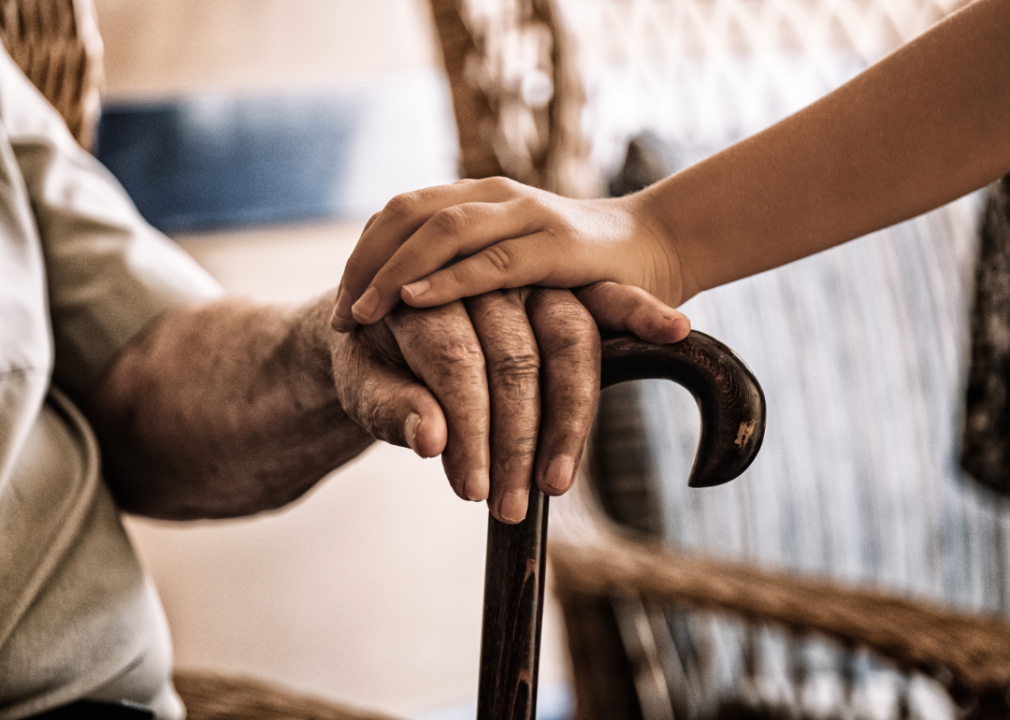The 'sandwich generation' is strained: How to save for retirement while caring for kids and aging parents
Caring.com analyzed resources from the IRS, Family Caregiver Alliance, National Council on Aging, AARP, and other organizations supporting aging Americans to compile a list of ways to save money for retirement while caring for multiple generations under one roof.
The "sandwich generation" is a term often used to describe Americans in their 40s and 50s caring for elderly parents and their own children. It's not just time they're dedicating to care, it's also money.
Amid higher-than-usual inflation, these Americans are experiencing cost overload during their peak earning years. Debt and difficulty saving are some of the top financial stressors they face. Of the sandwich generation caretakers who report having credit card debt, the average amount of debt is nearly twice that of the overall population, surveys suggest.
Longer lifespans, as well as higher housing and health care costs, are reshaping the long-term care experience for all Americans, let alone those also juggling the cost of raising children. Even for those looking to nursing homes to help alleviate the stress, worker shortages in long-term care have pushed the costs to new highs. The typical $8,000 per month cost now required for a semiprivate room at a nursing home makes at-home care look far more appealing. But it isn't free of costs, including emotional costs.
Generally, setting aside 15% of monthly income for retirement from age 25 until 67 is recommended by investment experts. Saving that much may feel challenging with additional caregiving costs.
"Millennials are finding themselves sandwiched between responsibilities like caring for aging parents and milestones in their own life journeys, like starting their own families, purchasing a home, and saving for retirement," New York Life vice president Jeff Beligotti said in a statement.
Intentionally cutting down on how much is spent on those added expenses can go a long way toward sustaining a retirement. And it begins, as so much else in financial planning does, by convening and communicating with every stakeholder.

Canva
Can parents contribute to the cost of care?
It's one thing for an aging parent to live under the same roof as their child and grandchildren, but it's another when they begin to lose the ability to care for themselves—especially if their child and their child's partner are providing financially for the household.
It can be helpful to have a conversation about how to handle late-life care expenses before a parent starts to lose their independence and specifically how aging parents can contribute to the cost of care if they have the means, according to the Family Caregiver Alliance.
The association provides guidance for writing a contract outlining a financial agreement with a family member who needs care. Personal care agreements can be helpful because they can help avoid future conflicts by setting expectations up front.

Canva
Home and community-based services Medicaid waivers
But not every aging parent has the resources to contribute to their own home care. Home and community-based services Medicaid waivers offer an avenue for obtaining financial compensation for in-home care for the elderly as an alternative to nursing home care. It's a program for Medicaid-eligible Americans with limited income and assets. Similar programs also exist in veterans' programs as well as some life insurance and long-term care policies.
Under the waiver program, the person receiving care can choose who will provide it. They can choose a family member or other loved one, and that caregiver can receive compensation from Medicaid for services like bathing, dressing, and preparing meals.
Caregivers can generally expect to be paid slightly under the hourly rate for professional home health providers. That can range from $21 to $35 per hour depending on the state or city someone lives in.
These waivers can also require joining a waitlist because states are able to cap how many waivers are available. People on waiver waiting lists had to wait an average of 36 months to be approved by their state in 2023, according to an analysis from KFF. Each state has a different name for its elder care waiver program. A list of state programs for HCBS can be found here, and a local area agency on aging can help with applications.

Canva
Claiming an elderly parent as a dependent on your taxes
You can also potentially save money by claiming an elderly parent you care for as a dependent when it comes time to file taxes.
If the parent is unable to care for themselves and requires assistance, it's possible to receive as much as $3,000 in tax credits per person cared for. To claim the parent as a dependent, the parent must have earned less than $5,050 in income for tax year 2024, not including income from social security. They should also have lived with the taxpayer for more than half of the year.

Canva
Prescription drugs
About 9 in 10 people 65 and over take prescription drugs of some sort, and their costs can add up quickly. Pharmacies will often price drugs differently, and taking the time to compare Medicare prescription prices at different pharmacies could pay off.
The National Council on Aging recommends budget pharmacies including Walmart, Costco, and Amazon. It also suggests using prescription savings tools like RubyWell, which can locate discounts for prescriptions at local pharmacies. Mark Cuban Cost Plus Drugs is another new drug wholesaler that offers low-cost mail-order prescription drugs. Choosing the generic version of any prescription drug over a name brand can also help lower costs.

Canva
Bargain hunting on items like walkers, gloves, and incontinence supplies
Caring for an elderly parent can mean purchasing items you wouldn't otherwise buy for your household including regularly stocking up on supplies for bathing, transportation, and basic hygiene.
There are savings to be found when shopping for products through medical supply specialists that purchase in bulk and pass savings on to customers. The NCOA recommended Carewell. Other sites like Discount Medical Supplies could also help with savings.

Canva
Transportation costs
Since the height of the COVID-19 pandemic, it's been far easier to find primary care providers offering virtual appointments, and using that option when possible can help cut down on gasoline costs and valuable time spent traveling.
Experts also now consider virtual care an adequate replacement for in-person doctor visits in many circumstances. According to a National Electronic Health Records Survey conducted in 2021, primary care providers, in particular, are more likely than other kinds of providers to say that the care they provide virtually is similar in quality to the care they provide in person.
Story editing by Carren Jao. Additional editing by Kelly Glass. Copy editing by Tim Bruns. Photo selection by Lacy Kerrick.
This story originally appeared on Caring.com and was produced and
distributed in partnership with Stacker Studio.
More Articles to Read

